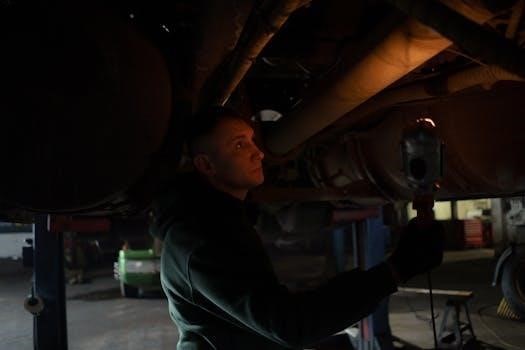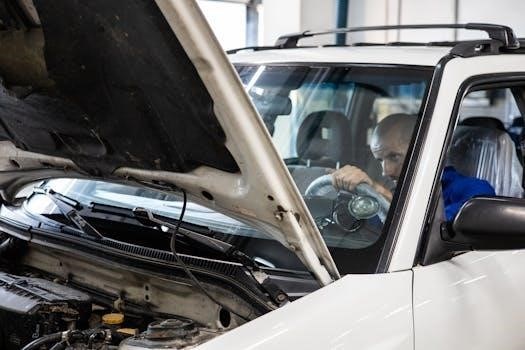This comprehensive manual is an essential resource for Central Service professionals. It provides the latest information and guidelines for reprocessing reusable medical devices. It covers various aspects, including decontamination, sterilization, and transportation of supplies, offering a detailed look at the field.
Overview of Central Service Departments
Central Service Departments, also known as Central Sterile Supply or Sterile Processing and Distribution, play a crucial role in healthcare facilities. These departments are responsible for the critical task of reprocessing reusable medical devices and instruments. The primary function is to ensure that all items used in patient care are thoroughly cleaned, decontaminated, and sterilized, ready for safe reuse. The scope of services can vary between different departments, yet all adhere to strict regulations and guidelines. They receive soiled instruments and equipment, then utilize both manual and automated methods for cleaning. The department also manages inventory, ensuring that all necessary supplies are available when needed. Central service is an essential, often unseen, part of the overall patient care system. Without its diligent work, the risks of infection and contamination would greatly increase. They also provide support to various departments within the healthcare facility, such as surgical suites and patient care areas. The technical manual provides a detailed understanding of their operations and responsibilities.
Scope of Services in Central Service
The scope of services within Central Service encompasses a broad range of critical activities. It begins with the receipt of soiled medical devices and instruments from various departments. This is followed by meticulous cleaning and decontamination processes, using both manual and automated techniques. Central Service personnel are responsible for inspecting items for damage or wear and tear, ensuring they are suitable for reuse. They then proceed with the proper sterilization of instruments, employing different methods based on the type of equipment and material. This can include steam sterilization, chemical sterilization, or other validated techniques. The department also handles the assembly of surgical instrument sets and packs, ensuring they are complete and correctly organized. They manage inventory levels, keeping track of supplies and anticipating needs. Furthermore, Central Service is responsible for the safe transportation of sterile supplies to the appropriate departments. Their work is vital for preventing infections and ensuring patient safety, and proper execution of each step is of paramount importance.
Decontamination and Cleaning Procedures
Decontamination and cleaning procedures are fundamental in Central Service, designed to remove soil, organic matter, and microorganisms from reusable medical devices. The process begins with immediate point-of-use cleaning, where gross soil is removed at the site of use. Items are then transported to the decontamination area, where they undergo a more thorough cleaning process. This typically involves manual cleaning with specialized detergents and enzymatic solutions, ensuring all surfaces and lumens are meticulously scrubbed. Automated cleaning systems, such as washer-disinfectors, may also be used to enhance efficiency and standardization. These systems utilize controlled cycles of washing, rinsing, and disinfection. Proper personal protective equipment (PPE) is essential for staff during decontamination, including gloves, gowns, masks, and eye protection, to minimize exposure to hazardous materials. Regular monitoring and maintenance of cleaning equipment are crucial to ensure optimal performance. Thorough rinsing and drying are also vital steps to prevent residue buildup and facilitate effective sterilization. Strict adherence to established protocols is essential to ensure patient safety and prevent healthcare-associated infections. The whole process demands accuracy and meticulous attention to detail.

Manual Cleaning Methods
Manual cleaning methods are a crucial aspect of the decontamination process in Central Service, especially for delicate or complex instruments that cannot withstand automated cleaning. This process involves physically removing soil and contaminants from medical devices using brushes, sponges, and specialized cleaning solutions. It requires meticulous attention to detail to ensure all surfaces, crevices, and lumens are thoroughly cleaned. The selection of appropriate cleaning agents is vital, considering the compatibility with the instrument materials and the types of soil present. Enzymatic detergents are often used to break down organic matter, while neutral pH detergents are preferred for delicate instruments. Proper technique is essential, including using the correct brush size and stroke to avoid damage. Adequate rinsing is crucial to remove detergent residues, which can interfere with sterilization. Thorough drying is also necessary to prevent corrosion and waterborne contamination. Manual cleaning must be performed in a designated area with proper ventilation and lighting. Personnel must wear appropriate PPE, including gloves, gowns, and eye protection, to minimize exposure to biohazards; Regular training and competency assessments are necessary to ensure staff proficiency in manual cleaning techniques.

Sterilization Processes
Sterilization processes are critical in Central Service to eliminate all forms of microbial life, ensuring patient safety. Steam sterilization, utilizing moist heat under pressure, is a widely used method for heat-stable items. The process involves exposing items to saturated steam at specific temperatures and pressures for a set duration. Monitoring and validation are essential to confirm effective sterilization. Chemical sterilization, using liquid or gaseous agents, is employed for heat-sensitive items. Ethylene oxide (EtO) sterilization, a gaseous process, is effective but requires careful aeration to remove toxic residues. Hydrogen peroxide gas plasma sterilization is another option, offering a faster cycle time and no toxic byproducts. Liquid chemical sterilants, such as peracetic acid, are used for immersible items. Proper preparation of items is crucial, including thorough cleaning and packaging to maintain sterility. Load configuration and packaging materials must be compatible with the chosen sterilization method. Biological indicators (BIs) are used to monitor the effectiveness of sterilization processes. BIs contain highly resistant spores that, when inactivated, indicate successful sterilization. Regular maintenance and calibration of sterilizers are necessary to ensure consistent performance. Sterilization records, including cycle parameters and BI results, must be maintained for traceability and quality assurance.
Transportation of Supplies
The transportation of supplies within a healthcare facility is a critical aspect of Central Service, ensuring that sterile and clean items reach their destination without compromise. Establishing clear policies and procedures for transportation routes is essential to maintain the integrity of processed items. Dedicated carts or containers should be used for transporting sterile supplies, protecting them from damage and contamination. These carts should be easy to clean and disinfect regularly. When transporting supplies, it is important to separate sterile items from soiled or contaminated items to prevent cross-contamination. Proper packaging and wrapping techniques are necessary to maintain sterility during transport. Closed or covered transport containers are preferred to protect supplies from dust, moisture, and physical damage. Personnel involved in transportation must be trained on proper handling techniques and infection control practices. Transportation routes should be planned to minimize exposure to high-traffic areas or potential sources of contamination. Prompt delivery of supplies is crucial to meet patient care needs and avoid delays. Documentation of supply movement, including tracking and tracing, helps maintain accountability and inventory control. In the event of a breach in packaging or suspected contamination during transport, items should be returned to Central Service for reprocessing. Regular audits of transportation practices are recommended to ensure compliance with policies and identify areas for improvement.
Regulations and Guidelines Compliance
Adherence to regulations and guidelines is paramount in Central Service to ensure patient safety and maintain quality standards. Central Service departments must comply with various regulatory bodies and professional organizations, including those that oversee healthcare facilities and sterilization practices. These guidelines cover all aspects of reprocessing, from decontamination and cleaning to sterilization and storage of medical devices. Staying up-to-date with the latest revisions and updates to these regulations is crucial. Compliance ensures that the department operates within the legal framework and minimizes the risk of infections and adverse patient outcomes. Regulations dictate specific processes, equipment requirements, and documentation procedures. Staff training and competencies must align with these guidelines. Regular audits and inspections are essential to verify compliance and identify any areas needing improvement. Documentation must be thorough and accurate, demonstrating adherence to required procedures. Failure to comply with regulations can result in penalties, fines, and legal consequences. Central Service departments must develop and implement policies and procedures that reflect these regulations. Compliance also extends to the handling and disposal of medical waste. Continuous monitoring of processes and performance is important to ensure ongoing compliance. Professional organizations often provide resources and support for staying informed about the latest regulatory changes.
Importance of Policies and Procedures

Well-defined policies and procedures are the backbone of a successful Central Service department, ensuring consistency, efficiency, and safety. These documents outline the step-by-step processes for every task performed within the department, from receiving soiled instruments to distributing sterilized supplies. Policies provide a framework for decision-making and establish clear expectations for all staff members. Procedures detail the specific actions required to complete each task, minimizing errors and promoting best practices. Written policies and procedures serve as a training tool for new staff and a reference for experienced employees. They ensure that all team members follow the same protocols, reducing variability and improving the reliability of reprocessing. The use of standardized policies and procedures improves accountability and helps to identify areas where further training or process improvements are needed. Clear guidelines also facilitate compliance with regulatory requirements and industry standards. Regular review and updates of policies and procedures are necessary to reflect changes in best practices and regulations. The development of these documents should involve input from all relevant stakeholders. Effective policies and procedures not only enhance patient safety but also improve the overall workflow and efficiency of the department. They provide a systematic approach to all activities, minimizing risks and maximizing the quality of service.

Central Service Technical Manual Editions
The Central Service Technical Manual has evolved through various editions, each reflecting the latest advancements and best practices in the field of sterile processing. The 7th, 8th, and 9th editions are notable examples, with each iteration building upon the previous one to provide the most current information. These editions incorporate feedback from experts and professionals in the field, ensuring that the manual remains a valuable resource. The continuous updates address changes in technology, regulations, and infection control practices. Each edition is carefully reviewed and revised to ensure accuracy and relevance. The 8th edition, for example, is often bundled with a corresponding workbook to enhance learning. The progression of editions demonstrates the ongoing commitment to improving the quality and consistency of sterile processing. These manuals often include detailed information on decontamination, sterilization, and transportation, covering a wide range of topics. The different editions serve the evolving educational needs of central service professionals. Accessing the most recent edition is crucial for practitioners aiming to stay informed and compliant with current standards. The manuals often include chapter quizzes to help users assess their learning. These editions have become the standard for education and training in the central service profession. Professionals should seek out the most recent edition to ensure they are working with the most up-to-date information.
Study Guides and Workbooks
Study guides and workbooks are essential components that complement the Central Service Technical Manual. These resources are specifically designed to reinforce the concepts presented in the manual and aid in knowledge retention. They often include chapter-by-chapter quizzes and progress tests that allow users to assess their understanding of key Central Service concepts. The workbooks are structured to help users apply what they have learned, thus solidifying their comprehension. Many workbooks are designed to be a direct companion to a specific edition of the manual, ensuring content is aligned. The inclusion of final exams in some workbooks helps in preparation for certification. These study tools are invaluable for those aiming to become certified and registered central service technicians. The structured approach of study guides and workbooks assists in a more effective learning process. They provide a method to test knowledge and identify areas where further study is needed. Furthermore, these resources often include practical exercises that enhance the application of learned concepts. The use of workbooks alongside the manual is crucial for those in training or seeking certification. These tools often come as part of a boxed set with the textbook, highlighting their importance; The study guides and workbooks help users engage with the material and improve their overall success in the field. They offer a hands-on way to master the complexities of central service procedures.
Certification and Training Resources
Certification and training resources are vital for professionals in Central Service. These resources provide the necessary education and credentials to ensure competency in the field. Various organizations offer certification programs designed to enhance the skills and knowledge of central service technicians. Training resources often include a combination of textbooks, manuals, and hands-on practical sessions. These resources are developed to meet the educational needs of both current and future professionals. The central service technical manual is frequently a key component of these training programs. Certification programs help to validate the expertise of individuals working in central service departments. These programs often require completion of coursework, practical experience, and passing an examination. Access to study guides and workbooks are also crucial for those seeking certification, as these tools aid in exam preparation. Continuous learning is essential in this field, and various training resources are available to support professional development. These resources are designed to keep professionals updated on the latest techniques, regulations, and guidelines. The training materials also emphasize the importance of adherence to protocols and procedures. Furthermore, many organizations offer workshops, seminars, and online modules to help technicians stay current. Certification not only enhances an individual’s career prospects but also ensures patient safety by maintaining high standards. These resources help professionals contribute to a safer healthcare environment.